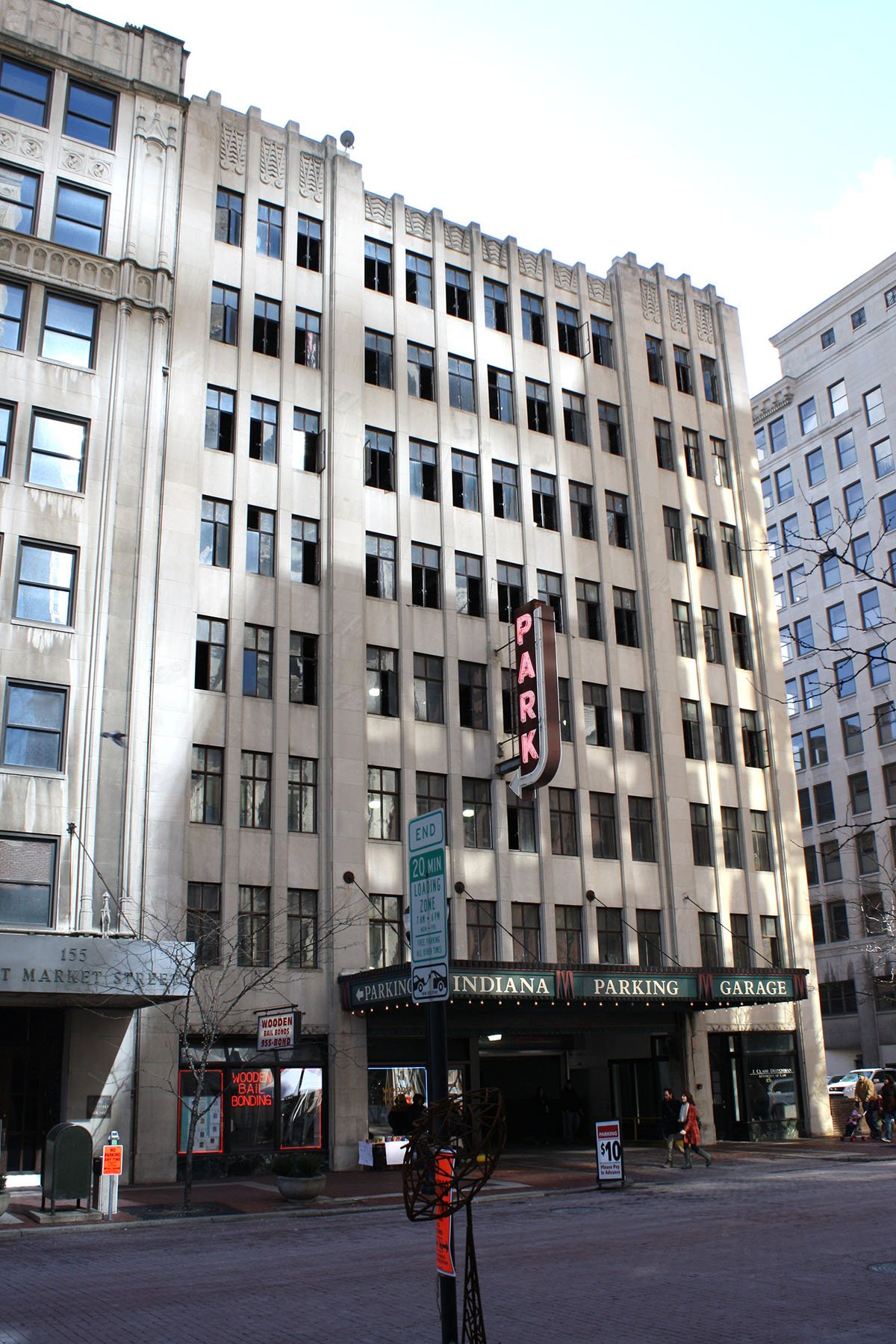36. Early Parking Garages Were Auto Inns
James Glass
Column that appeared in the Indianapolis Star onIn 1922, the Columbia Burlesque Theatre closed its doors at 126 E. Wabash Street downtown. Constructed as the Empire Theatre in 1892, the brick Romanesque structure had hosted countless troupes of show girls dressed in tights for male entertainment. But by the early 1920s, silent movie palaces were commanding audiences that once had thrived on live shows in vaudeville and burlesque. A new owner, Emmett M. Waits, gutted the theatre auditorium and installed a reinforced concrete structure consisting of slabs and ramps within the exterior brick walls. He named his business the Empire Garage Co. and soon was providing downtown business people with sheltered homes for parking their automobiles.
Waits had recognized a mass transformation happening in American cities after World War I: downtown office workers were buying houses in suburban neighborhoods and acquiring automobiles to commute to their work place. The streetcar age was coming to a close, and everyone was mad about cars. With thousands of cars converging on downtown daily, there was a demand for convenient places to park, close to each person’s office. The Empire Garage offered such convenience close to office buildings along E. Market Street to the south, Delaware Street to the east, and Ohio Street to the north.
Also in 1922, an investor from Hollywood, California, William B. Cooley, constructed the Plaza Garage at 30 W. Vermont Street. Cooley’s entirely new structure also featured reinforced concrete ramps and parking floors, but with a glazed brick façade and attached stone ornaments. The Plaza advertised that customers could both park their cars and have them serviced.
The Test brothers—Donald N. and Skiles E.—brought the concept of a “motor inn” to Monument Circle. In 1924 they built a combined office building and parking garage on the Circle at W. Market. Behind the façade on the Circle were nine floors of offices. At the rear of the offices on seven floors was the Circle Motor Inn, affording business people the convenience of parking on the same floor as their office. By 1931, the Test Building also offered the Circle Motor Inn Golf Course on the roof, for the leisure time enjoyment of building tenants and other patrons. The Tests soon expanded their motor inn business to include five other parking structures, including the Plaza.
On the corner of Delaware and Market, Thomas A. Moynahan and his construction company used a similar approach to the Tests as they designed and built the Union Title Building. It was a limestone-fronted Gothic office structure with the third, fourth, and fifth floors devoted to the Del-Mar Garage. Next door, probably the most lavish of all the “parking inns” was erected in 1930 by officers of the E.C. Atkins and Co. saw works on South Street. The Indiana Parking Garage was an 8-story structure that resembled an office building from the street. It boasted a handsome limestone façade with Art Deco sculpted panels. Catering to business owners and executives, the garage advertised delivery of cars to customers; uniformed attendants posted at theaters and private clubs, ready to fetch a client’s vehicle; and oiling, greasing, washing, and “simonizing” (possibly a waxing treatment).
All of these early experiments in providing a day-time home for autos still stand, and all but the Union Title (now the Barristers) Building are used for parking. The Test Building has been restored by Andre Lacy and now carries his name.

Indiana Parking Garage, 2012. James Glass
